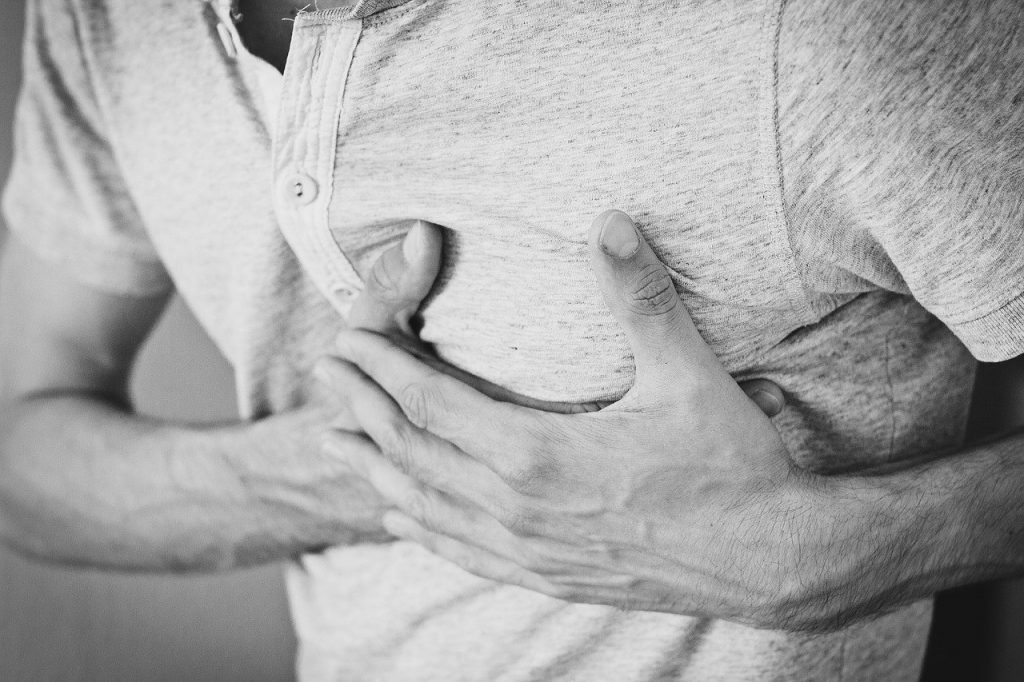Vasodilators (anti-angina) medicines are used to ease chest pain, to treat and prevent angina. It helps as it relaxes and widens your blood vessels and decreases your blood pressure.
A category of vasodilators called nitrates increases the supply of blood and oxygen to the heart while reducing its workload which can ease chest pain. Usually, you will use a vasodilator for a long time, possibly for the rest of your life.
There are two types of nitrate medicines.
Short-acting nitrate medicines relieve angina symptoms within a few minutes. These medicines are a spray or tablet that goes under your tongue (sublingual), and as a topical application (cream). They are absorbed through the lining of your mouth into your bloodstream. The most common short-acting nitrate medicine is glyceryl trinitrate (sometimes called ‘GTN’).
Long-acting nitrate medicines prevent angina symptoms. They do not relieve an angina episode within a few minutes. These are usually a tablet that you swallow whole (you do not put them under your tongue like short-acting nitrate medicines). Nitrate medicines may also come as patches, and you gradually absorb the medicine through your skin.
Nitrate Glyceryl Trinitrate (GTN)
Your GTN spray or tablet is a nitrate. Nitrates relax your coronary arteries and allow the blood to reach the heart muscle more easily. Always keep your GTN spray/tablet with you in your pocket or bag. Emergency GTN sprays are available from your pharmacist without a prescription. Always read the instructions and expiry dates.
Vasodilators commonly prescribed include:
- Isosorbide dinitrate (Isordil)
- Isosorbide mononitrate (Imdur)
- Hydralazine (Apresoline)
- Nitroglycerin (Nitro-Bid, Nitro Stat)
- Minoxidil

How to take GTN tablets
- Sit down.
- Put a tablet under your tongue and close your mouth.
- Allow the tablet to dissolve slowly – do not suck, chew or swallow it.
- Close the container – this is important, so your tablets do not lose their strength.
- Rest for a while, then stand up slowly.
- It’s a good idea to have a spare, unopened bottle of tablets. It’s important to not run out.
How to use GTN spray
Before using your spray for the first time, check it’s working by pressing the button on the nozzle at the top of the bottle a few times until a fine mist comes out. Do a test spray onto a tissue so you know how it works.
- Sit down.
- If you have not used your spray for over a week, do 1 spray into the air before use.
- Hold the nozzle in front of your mouth, with your finger on the button, and take a deep breath.
- Open your mouth and lift your tongue up.
- Spray under your tongue by pressing once firmly – do not breathe in while you spray.
- Close your mouth immediately.
- Breathe through your nose keeping your mouth closed.
- Rest for a while before you stand up slowly.
- It’s a good idea to have a spare spray. It’s difficult to tell how much is left in a bottle and it’s important to not run out.
Common side effects
These are some of the common side effects that happen in more than 1 in 100 people, but some are less likely if you’re using skin patches. It is important to talk to your doctor or pharmacist if these side effects are bothersome or last more than a few days:
- headaches (very common)
- the feeling of dizziness
- feeling weak, tired or sleepy
- nausea (feeling sick)
- red face (flushing)
When to call 999 or the Emergency Services
If you have taken 3 doses* of GTN and you’re still in pain 5 minutes after your 3rd dose or your pain is getting worse, or you feel unwell. These are signs that you may be having a heart attack. If in doubt check it out!
*1 dose is either 1 tablet or 1 to 2 sprays.
